All about the Cape sundew
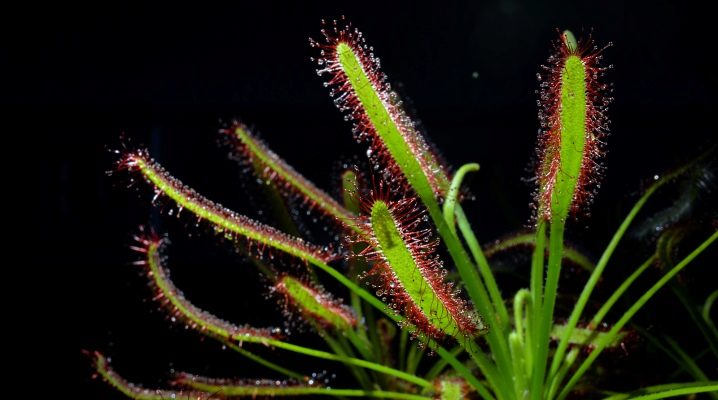
Many of the novice florists do not always know exactly how to grow a sundew at home. Dewdrop is a predatory plant for which it is very difficult to create comfortable conditions in a room environment. But this does not mean that it cannot be grown there.
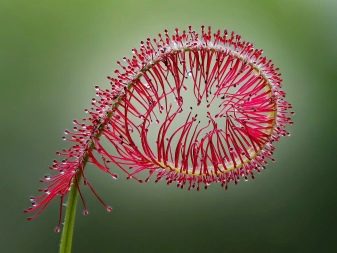
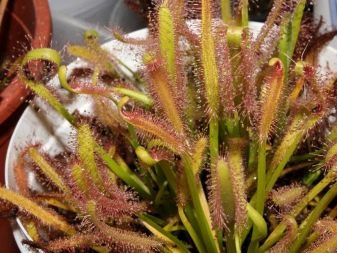
Description
At the moment, there are more than 150-200 species of sundew, half of which are perennials.
The name of the culture takes its roots from the Greek language from the word Droseros, which in translation means "something that is covered with dew." This name describes the Cape sundew as accurately as possible as a species.
All flowers have glandular hairs, and drops form on them. These are secretions of sticky secretions, in shape and color they are somewhat reminiscent of morning dew.
The variety originated from South America. Now the culture can be found in New Zealand, Australia and even in Russia.
The plant is a small rosette covered with thick leaves. Leaves can vary in size and even shape. There are dwarf species in which the leaves grow no more than 5 mm, and in some, the length can reach 50 cm.
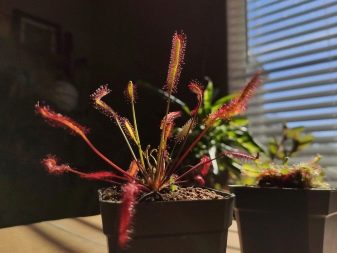

Leaf plates begin their growth directly from the rosette, or form on petioles. Then their shape can be round or oblong, elongated and narrow. The differences are based on climatic conditions - the hotter the climate, the more sundew. The colder it gets, the smaller it gets.
In both cases, the leaves will still be covered with long reddish hairs, at the tips of which a secret forms - shiny drops of mucus. This secret is necessary for obtaining food. When an insect sits on a leaf, it immediately sticks.
Then the leaf begins to gradually curl up into a tube. At this moment, the first stage of food digestion occurs. It takes from 2 to 5 days (much will depend on the size of the loot). After the food is digested, the leaves unfold again, straighten, and after a couple of days a secret reappears on them.
Cape sundew has no stem. The root system is creeping, it develops well, but at the same time it is rather weak. In total, the roots are only needed to find and absorb moisture, and also to keep the bud on the soil surface.
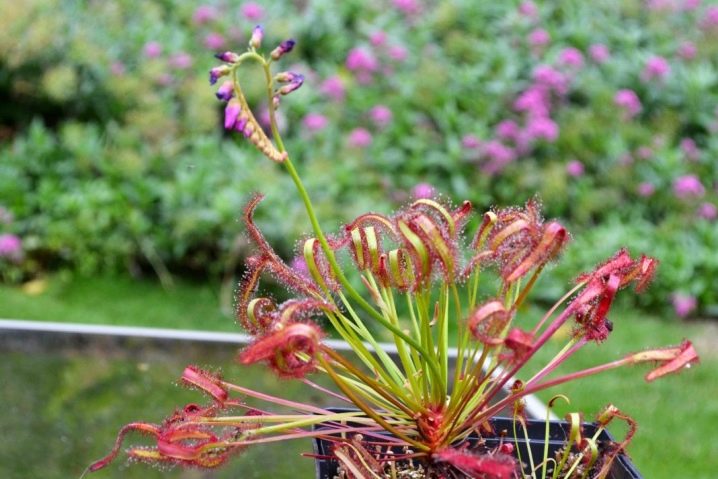
Alba blooms for only 2-3 months, from the end of spring. The flowers are small, only 1.5 cm, inconspicuous. In some species, the diameter of the bud can be 5-6 cm. Sepals are collected in a brush or panicle. The peculiarity of such a structure helps pollinating insects not to fall into the trap of a predator. The bud opens only in the sun.
The fruits of the sundew are in the form of small bolls, in which small seeds are formed. This period falls in August. After the seeds are fully ripe, the fruit itself, as it were, splits into 3 parts, thereby scattering its seeds on the soil. The seed will germinate successfully next year.

Where exactly does the sundew grow? Peat bogs are considered the ideal habitat for this plant. The surface of the soil is always moist, and the number of insects is sufficient for food. Alba can also be found adjacent to heather shrubs.

In the tropics and subtropics, sundew can bloom all year round. But in cooler places, the flower goes into a dormant stage and hibernates perfectly under the cover of snow.
Planting and leaving
For growing at home, a sundew is already purchased as a seedling. Rarely does anyone grow this flower on their own from sowing seeds.
Crop care should include the following points.
-
Lighting. The plant loves the sun. On average, a flower in the summer needs to be in natural light for 12 hours. In winter, these figures are reduced to 5-7 hours. For growing, window sills that are located in the west or east are suitable. It is worth remembering that direct sunlight can burn the leaves.
-
The temperature should be maintained no more than 20 ° C. Air humidity - 60%.
-
The plant does not need to be fertilized, since the roots of the sundew are not designed to absorb any useful minerals. But insect feeding is mandatory. Every week - 1-2 flies. Such bait must be taken care of for the winter, when most of the insects go into hibernation. For this, various worms purchased at a fishing store are suitable.
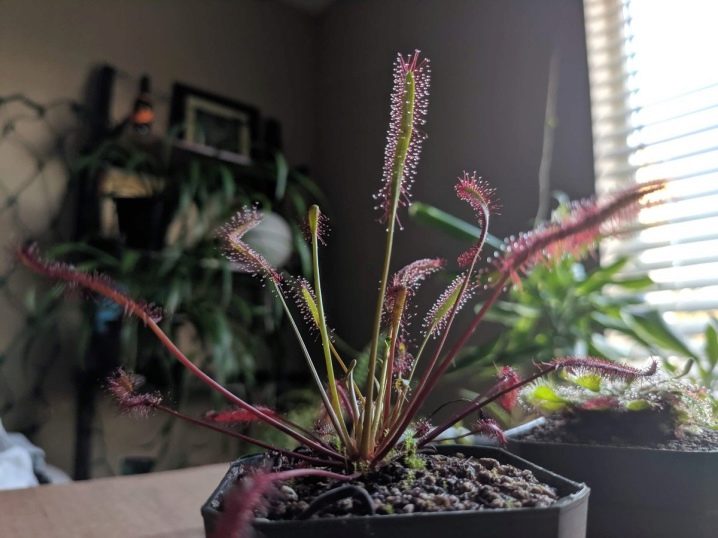
Reproduction
Sundew can be propagated in different ways.
-
Cuttings. A leaf should be cut from the main plant and placed in moist sphagnum, in a small greenhouse. Rooting will take place after 2 months. The plant can then be transplanted into a separate pot.
-
Collect the seeds and pour them onto the peat, which should be mixed with sand. Then the container is covered with a film, and the seedling is expected to appear. A dive of plants is necessary if the seeds were germinated in one box.

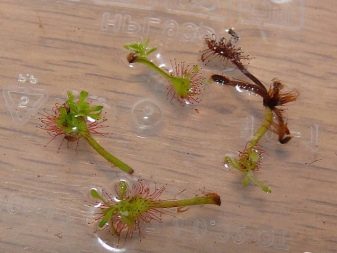
Diseases and pests
Pests usually do not attack sundew. In rare cases, it can be aphids or spider mites. For prophylaxis use "Actellik".

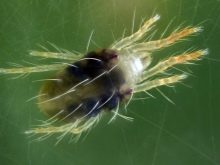

All diseases appear due to the fact that the root system has been waterlogged. Therefore, it is necessary to monitor the moisture.

























The comment was sent successfully.